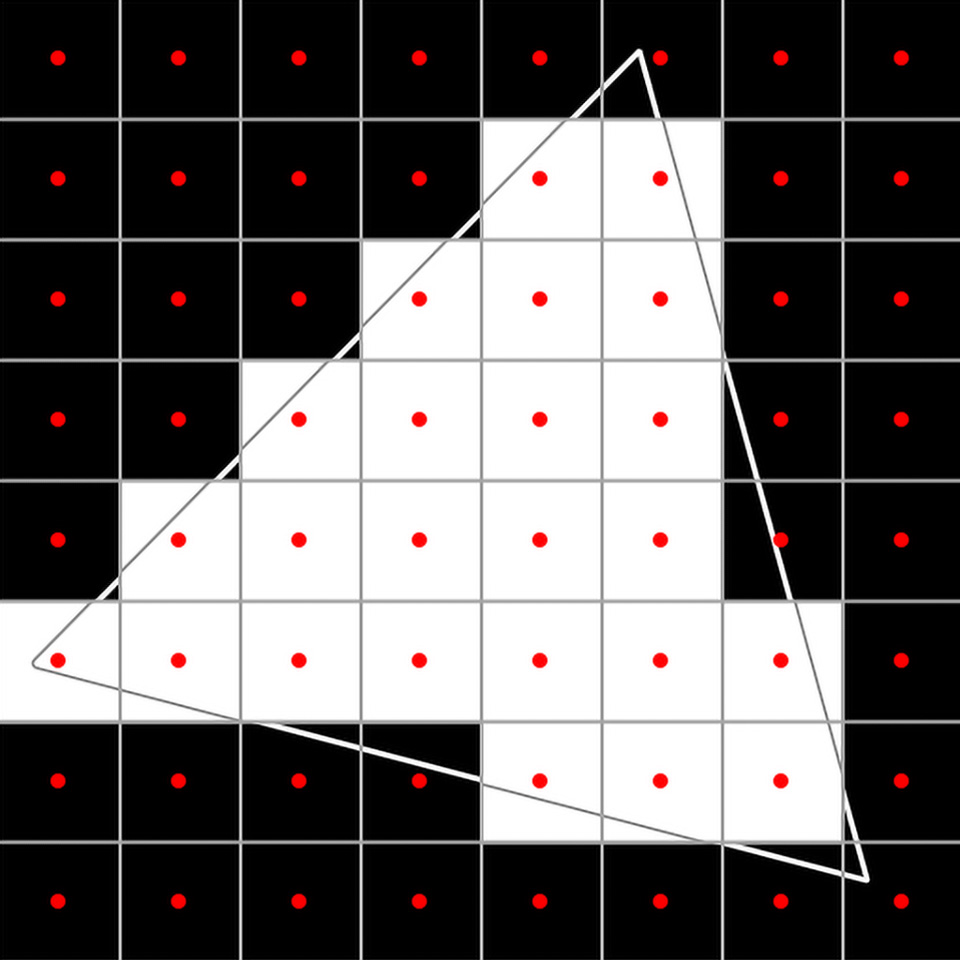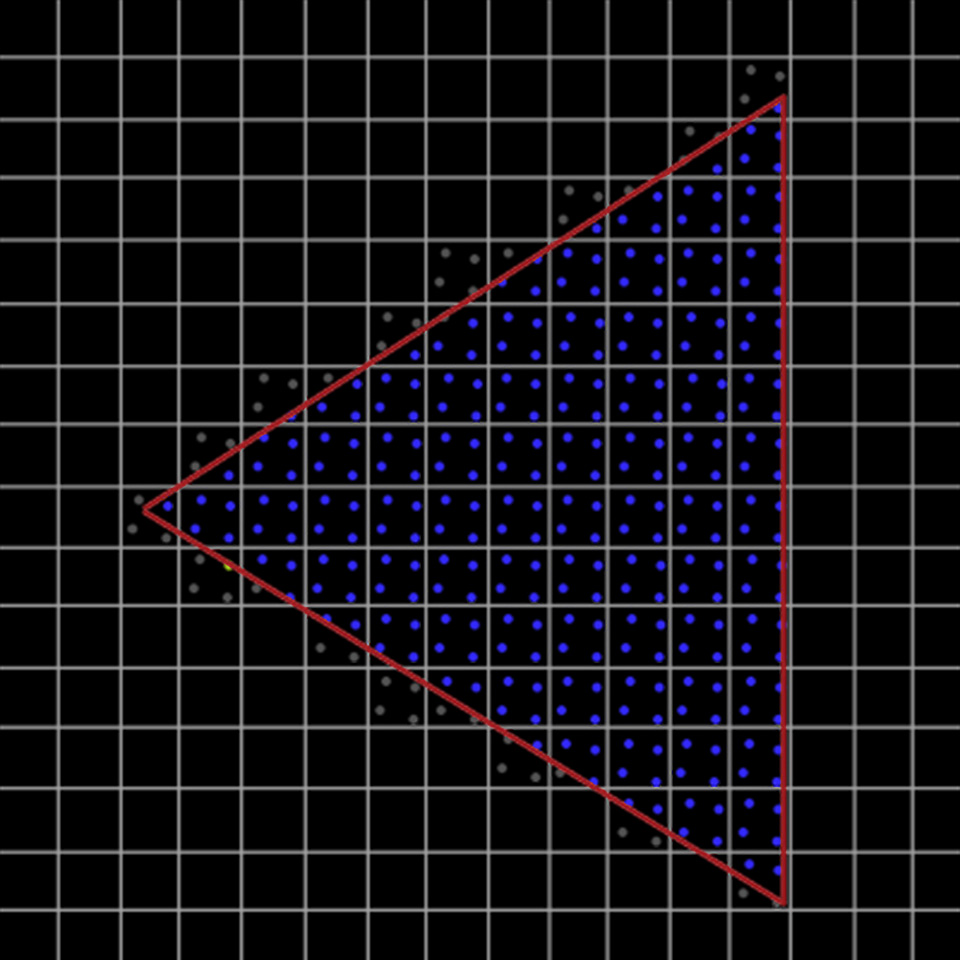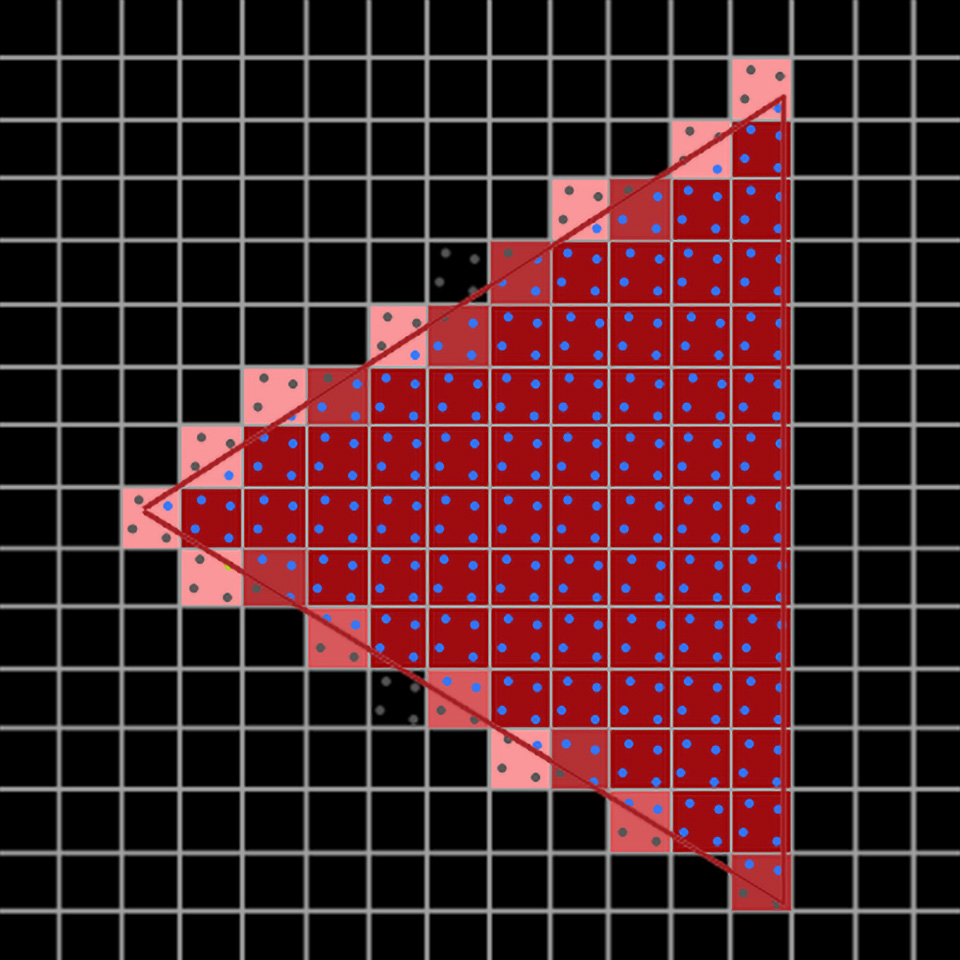-
Choose a computerStep 1 of 3. Goals and Wishes01. Goals and Wishes02. Deadlines and Budget03. ContactsMultiple options can be selectedUsage goalsWishesYour choice
-
Choose a computerStep 2 of 3. Deadlines and Budget01. Goals and Wishes02. Deadlines and Budget03. ContactsOnly one option can be selectedDeadlinesBudget
-
Choose a computerStep 3 of 3. Contacts01. Goals and Wishes02. Deadlines and Budget03. Contacts* — required field
- What is anti-aliasing in games?
- Types of anti-aliasing in games
- What smoothing is better to choose?
- PCs HYPERPC

When we enter the graphics settings of any modern game, we see a variety of parameters. Some of them are self-explanatory. For example, texture quality obviously determines how detailed the in-game models will be. But in graphics settings, there are parameters whose names do not tell us anything. And one of them is anti-aliasing. In the following, we will explain why this technology is needed, how to enable it, and how the most popular algorithms work.
But before we do that, let's clarify that for the sake of simplicity, we will omit complex nuances. The average gamer doesn't need to know every anti-aliasing algorithm in detail. Our task is to convey information to you so that you can easily adjust graphics in video games.
What is anti-aliasing and why is it needed?
To understand why anti-aliasing is needed in games, let's briefly familiarize ourselves with the structure of displays. Images on modern monitors are constructed using small square pixels. For example, Full HD displays have a total of 2,073,600 pixels. When we need to depict a straight line, there are no problems. But when we need to create a diagonal, the "jaggies" effect appears. It is also called "aliasing."
There are three ways to get rid of this effect:
- Stop using LCD monitors;
- Increase the maximum number of pixels on the display;
- Develop an algorithm to eliminate aliasing.
Humanity completely abandoned the first option. The thing is that LCD displays provide high-quality images. Cathode ray tube monitors, which were popular in the past and did not have "jaggies," were significantly inferior in terms of detail.
The second option is very difficult to implement. Manufacturing electronics with millions of tiny components is incredibly challenging. Also, increasing pixels will significantly increase production costs. Many users simply cannot afford such expensive technology. Yes, since 2013, 4K resolution monitors and televisions began to appear in stores. They have about 6 million more pixels than Full HD displays. But their cost, as well as the need to buy top-end graphics cards, deter gamers even in 2023. According to Steam statistics, only 2.6% of users have 4K monitors. But high cost is just one of the problems. Another problem is that even displays with 4K resolution are not sufficient to eliminate aliasing completely. The "jaggies" become much smaller, but they do not disappear entirely. And there can be no talk of mass use of 8K displays.
And the third option remains – to develop a software program to eliminate "jaggies". Graphic engineers did just that. They gave this technology the name "Anti-Aliasing". Thus, anti-aliasing is an algorithm that eliminates the "jaggies" effect on the boundaries of curved lines.
What types of smoothing are there in games
It seemed that getting rid of aliasing would be simple. And indeed, programmers quickly found ways to eliminate it. The developed method worked perfectly against "jaggies". However, this solution had only one drawback - it required incredibly high computational power. Game developers were not satisfied with this, so graphics programmers started looking for alternative methods to fix this effect. And all these searches have led to the creation of dozens of different algorithms to this day. Moreover, they continue to be developed and improved. It's 2023, but the problem of smoothing in modern games is still not solved.
The problem lies in the numerous shortcomings that these algorithms have. The need for additional computational power is just one of them. The thing is, there are several types of aliasing in computer graphics. And all algorithms handle some types well, but poorly handle others. You don't need to know everything about each type of aliasing to properly adjust graphics in games. But let's briefly familiarize ourselves with them:
- Geometric aliasing. Occurs when constructing inclined lines. For example, when we see a wall, we see "steps" on its edges.
- Subpixel aliasing. Occurs when displaying narrow objects. For example, power lines simply disappear in the distance.
- Subpixel aliasing. Occurs when narrow objects approach each other. For example, when moving away from a grid, its bars begin to turn into a "mush".
- Transparency aliasing. Occurs when displaying many small objects - when moving away from a tree, the foliage starts to flicker.
- Texture aliasing. Occurs when viewing textures at an angle - the further the landscape texture, the more blurred it becomes.
- Shader aliasing. Occurs when creating contrasting lighting. For example, bright sunlight reflection can create square artifacts.
In the end, the desire to find a balance between performance and efficiency has spawned dozens of types of smoothing. However, by 2023, developers have dismissed many of them, and today only the following types of smoothing are used in games:
- Super Sampling Anti-Aliasing (SSAA);
- Coverage Sampling Anti-Aliasing (CSAA);
- Temporal Anti-Aliasing (TAA);
- Fast approXimate Anti-Aliasing (FXAA);
- Morphological Anti-Aliasing (MLAA);
- Subpixel Morphological Anti-Aliasing (SMAA);
- Deep Learning Super Sampling (DLSS).
All these words and abbreviations may seem intimidating at first glance. Moving forward, we will skip numerous technical nuances and focus only on the working principles of these technologies. You will understand that there is nothing super complicated here in reality.
SSAA (Super Sampling Anti-Aliasing)
Remember how we mentioned that developers quickly found a method to eliminate "jaggies"? Well, that method was called Super Sampling Anti-Aliasing, or SSAA for short (we like to call it supersampling). To create an algorithm that removes the "steps," developers came up with the idea of placing a virtual point in the center of each pixel. They named this point a "sample." If a diagonal line passed through this sample, the pixel would light up, and if it didn't, the pixel wouldn't display an image.
As seen in the diagram, it was impossible to create a proper triangle consisting of diagonal lines using this method. So, developers decided to place not one, but four samples inside each pixel. Furthermore, these samples were located at different positions.
But why use multiple points instead of just one? It turns out that this was necessary to control the pixel's brightness level. The working principle is as follows:
- If the line passes through all four samples, the pixel lights up at full brightness;
- If the line passes through only three samples, the pixel lights up at three-quarters brightness;
- If the line passes through two samples, the pixel operates at half brightness;
- If the line passes through only one sample, the pixel lights up at one-third brightness;
- If the line doesn't pass through any of the samples, the pixel doesn't light up at all.
This simple manipulation with "virtual points" effectively solved the aliasing issue. While engineers celebrated their victory, game designers were horrified. Yes, the SSAA algorithm did eliminate "jaggies" in computer graphics. However, it did so at a monstrously high cost – the program heavily burdened the graphics processor. This was because the system treated each sample as an individual pixel. For example, setting the graphics to SSAA "4X" would create an image that was four times larger than the original and then compress it to fit the monitor's resolution. It's easy to understand that the GPU workload would increase fourfold as a result.
This prompted graphics engineers to search for a new algorithm. They quickly noticed that aliasing only occurred at object boundaries. So why sample the entire image? Why not calculate only the pixels located at object boundaries? And that's exactly what they did. The new technology was called "MultiSample Anti-Aliasing," or MSAA for short (we like to call it multisampling). In most cases, the new algorithm indeed required much less processing power. However, in video games, there were still scenes where MSAA was just as resource-intensive as SSAA. For example, in forests with abundant vegetation. Additionally, multisampling fell significantly behind supersampling in terms of effectiveness. MSAA only tackled geometric aliasing, while other types of "jaggies" remained unaffected. To address this, programmers created an improved version of multisampling, which we will discuss later.
CSAA (Coverage Sampling Anti-Aliasing)
CSAA is an enhanced version of MSAA. Since this type of smoothing is rarely used in modern games, we won't dive into specifics, but just provide a general overview. The CSAA algorithm, like MSAA, works on object boundaries. However, in addition to regular samples, it also utilizes additional samples. But what are these samples for? These auxiliary samples gather information about neighboring pixels to create a higher-quality image. Furthermore, they have minimal impact on system resources – the highest CSAA mode in terms of performance is equivalent to MSAA 4X. Yet, the quality of the final image matches that of MSAA 8X. But despite these achievements, game developers still found the requirements to be too high. Consequently, graphics engineers began working on new types of smoothing that do not rely on samples in their operations.
TAA (Temporal Anti-Aliasing)
This algorithm is considered the standard in the gaming industry. Previously, we mentioned that all types of anti-aliasing handle some types of aliasing well, but poorly with others. TAA anti-aliasing, on the other hand, is the only algorithm in the world that effectively tackles all types of aliasing. And it does so with minimal performance impact. When TAA anti-aliasing is enabled, FPS in games only drops by 5-10%. This is significantly less compared to SSAA and MSAA. Additionally, temporal smoothing works during the post-processing stage, meaning game developers don't need to integrate the algorithm into their engine. They just need to add the smoothing files to the project and write a few lines of code.
The image on monitors is built using frames that rapidly switch with each other. The more frames that switch in one second, the smoother the image will be. This characteristic is referred to as "Frames Per Second" or simply "FPS". TAA anti-aliasing works through these frames:
- The algorithm remembers a portion of pixels from the previous image;
- It uses them to reconstruct the new image;
- The final pixel placement is averaged;
- A smoothed image is created.
Yes, this method works as straightforwardly as it sounds. No manipulations with points, samples, or selection. It simply takes a portion of the previous frame and combines it with the new one. TAA was devised by the brilliant developers at NVIDIA. You may wonder why they are considered brilliant. Well, it's because they came up with the simplest idea of utilizing previously rendered frames.
But does TAA anti-aliasing have any drawbacks? It does, but only two: "ghosting" and "blurring". "Ghosting" refers to the trails formed by quickly moving objects. You may have noticed how falling leaves leave a trail behind them in modern games. That's exactly what ghosting is. Unfortunately, it is impossible to completely eliminate this effect. However, developers have managed to significantly reduce its intensity. Increasing the frame rate also helps. For example, ghosting is much stronger at 30 FPS compared to 60 FPS. "Blurring" refers to the loss of detail. The image becomes blurry and undefined. Completely getting rid of this phenomenon is impossible. However, the intensity of blurring can be reduced in several ways:
- Increase the resolution. At Full HD, there will be more blurring, but less at 2K, and almost none at 4K.
- Applying sharpness. This effect accentuates the edges of objects, making them more detailed. The intensity of blurring also depends on the work of graphics programmers. For example, both Battlefield 5 and Days Gone use the same TAA anti-aliasing. However, the former has much more blurring compared to the latter. Why is that? Some developers are better at implementing certain technologies.
FXAA (Fast approXimate Anti-Aliasing)
This type of anti-aliasing was widely popular before the invention of TAA. It gained popularity because it integrated easily into games and had minimal performance requirements (a 2-3% drop in FPS). Interestingly, this algorithm was also developed by NVIDIA. The FXAA algorithm eliminates aliasing by comparing the brightness and contrast between neighboring pixels. For example, it recognizes the difference in brightness between a wall and the sky. The algorithm identifies their boundary and smooths out the detected line. Despite its advantages and simple operation, FXAA has numerous drawbacks. It doesn't handle many types of aliasing well and significantly blurs the image.
MLAA (MorphoLogical Anti-Aliasing)
Similar to FXAA, this type of anti-aliasing analyzes colors between neighboring pixels. It was developed by Intel, and all computations are performed on the central processing unit rather than the graphics card. The MLAA technology eliminates "jaggies" in three stages:
- First, it detects sharp color transitions (similar to FXAA);
- Then, it recognizes them using a special algorithm;
- Finally, the recognized pixels are blended together.
MLAA smoothing handles "jaggies" relatively well while requiring minimal processing power. However, this algorithm has two key drawbacks: blurriness and the inability to work well with small objects. To address these issues, developers decided to modify this technology, resulting in a new type of anti-aliasing, which will be discussed further.
DLSS (Deep Learning Super Sampling)
Explaining in simple terms how this type of smoothing works is difficult. Therefore, we will provide only the most general information. So, all anti-aliasing technologies require computational power. Some algorithms require a lot of performance, while others require less. But there is only one type of smoothing that doesn't take away FPS, but, on the contrary, adds to it. Sounds like magic, doesn't it? But in reality, it is a reality. We are, of course, talking about DLSS, or "deep learning-based smoothing" from NVIDIA.
This technology is based on a neural network. If we skip the complex technical details, it is a mathematical model that can learn on its own. To work, the neural network needs to multiply multiple data matrices. However, graphics cards have no idea how to do this. Therefore, NVIDIA has added special computing blocks to its devices called "tensor cores." DLSS smoothing works thanks to these cores.
So why does FPS increase instead of decrease? The thing is, when DLSS is enabled, the image displayed on your monitor has a lower resolution. For example, if you have a Full HD display and you enable DLSS at "quality," the game runs not at 1080p, but at 720p. But how is this possible if the graphics settings are set to 1920×1080p? That's where the neural network comes in. It "fills in" the image to the resolution set in the game settings.
DLSS smoothing has the same advantages and disadvantages as TAA. This is because temporal anti-aliasing is the basis of this technology. If simplified to the maximum, DLSS is the same as TAA but with added performance.
Recently, a separate version of DLSS was released - DLAA. The difference is that it does not reduce the image resolution. The neural network is used to improve the quality of the image. As a result, FPS is not increased, and the quality of the final image is almost indistinguishable from standard TAA.
Which smoothing to choose?
The best smoothing today is DLSS. However, this technology is exclusive to NVIDIA GeForce RTX graphics cards. If a game does not support DLSS, you have a different card, or you simply don't like how the image is smoothed, then enable TAA. It is used by default in almost all modern projects. But let's say you play esports projects and want to get rid of "blurring." In that case, use SMAA.
By the way, don't forget that you can reduce "blurring" by increasing the image resolution. Many games have a parameter called "resolution scale." By default, it is set to 100%. If you increase it, for example, to 130%, the game will run at a resolution that is 30% higher than the original.
Let's understand with an example. Suppose you have a monitor with a resolution of 1920×1080p, and you set the resolution scale to 130%. In this case, the image will be displayed not in 1920×1080px but in 2496×1404px. But keep in mind that the load on the graphics card will also increase by 30%.
Sharpness also helps partially reduce blurring. You can add it to any game if you have the GeForce Experience program installed. It allows you not only to update NVIDIA graphics card drivers on time but also to apply graphic effects. Enter the game, press the Alt+F3 key combination, and add sharpness. Its intensity can be adjusted using a slider.
In older games, modern types of anti-aliasing may not be available. More often than not, you will have to settle for multisampling. Set it to 2X or 4X. And if the power of your graphics card allows, you can try setting MSAA to 8X.
HYPERPC computers and modern types of smoothing
HYPERPC systems are equipped with NVIDIA RTX series graphics accelerators. This means that you will have access to any smoothing, including DLSS. It increases frame rate several times and allows you to play with the latest graphic technologies. Even ray tracing will not be a problem for you. With HYPERPC computers, you have full access to the world of gaming at maximum graphic settings.



